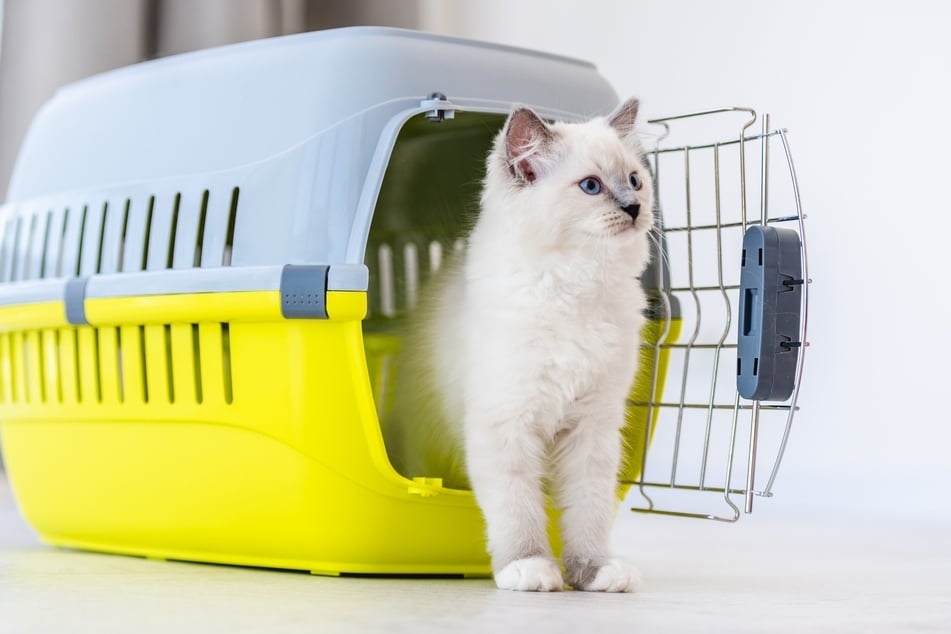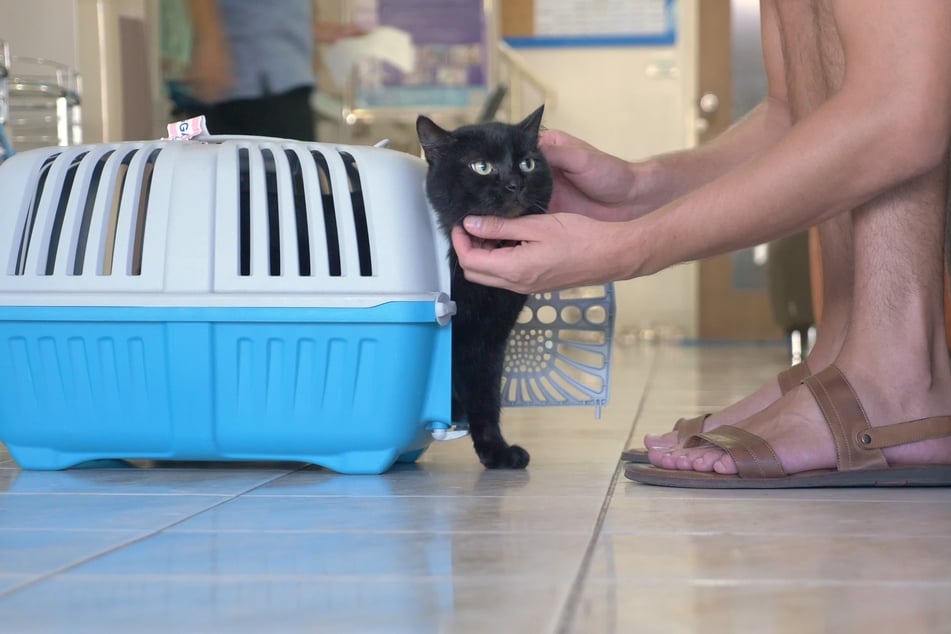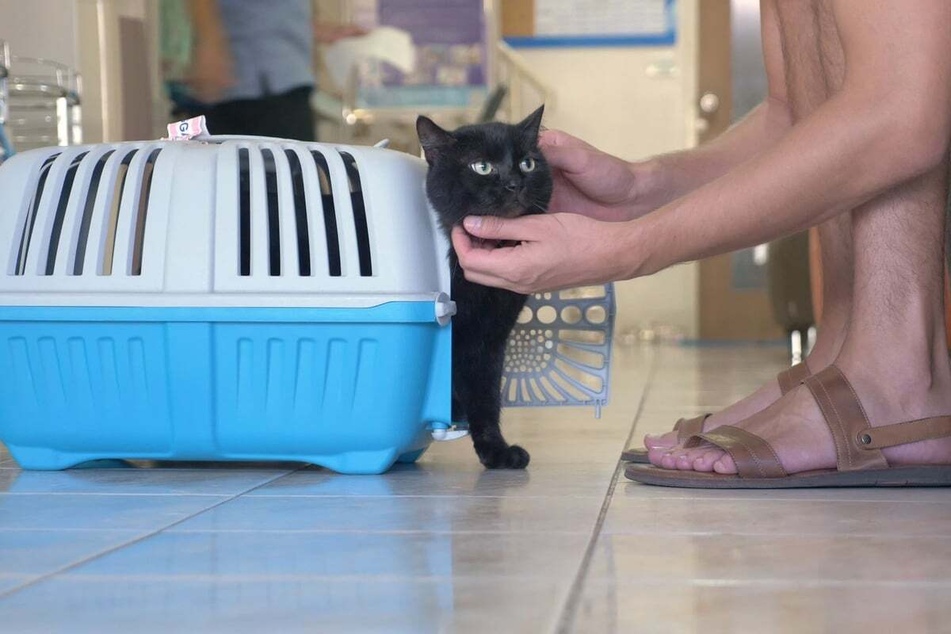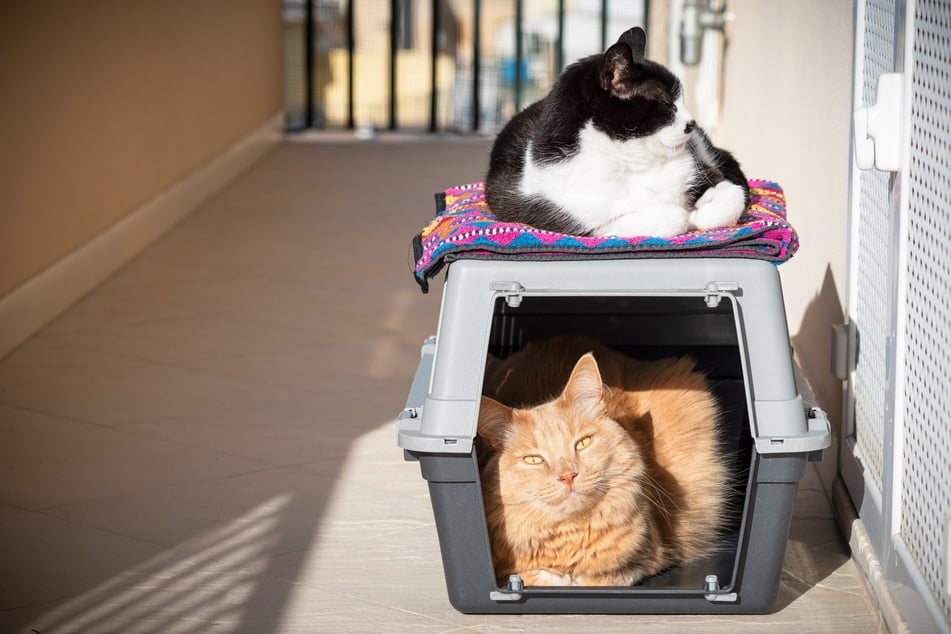Cat carrier: How to get a cat into its box
Few pets are more difficult to keep under control than the humble cat, and that goes double when you have to leave the house. How do you get your cat in its carrier, and how can you make it a little easier?

Cats are freedom-loving creatures, enjoying their strolls around the yard, their climbs over the walls and onto the roof, and their digs in the dirt. As a result, when you put your kitty in a box, you'll likely face an insane amount of anger, resentment, and aggression both while you are trying to get it inside and once you have let it out again.
So what makes the best cat carrier, and how big should it be? How do you get a cat into its carrier, too, and should you be worried and anxious or chilled out and cool about it? We've got all the tips and tricks.
Best cat carrier

While we are not going to promote any specific cat carrier in this article, we want to share a few criteria to help you decide which one is best for you. You are going to be transporting your kitty in this box, taking it to the vet, cattery, and away with you on trips, so it needs to be comfortable, sturdy, and not too frightening for your beloved feline friend. Let's take a look at how to find the best cat carrier.
How can I identify a good-quality cat carrier?
Tip 1 - Removable top section: An ideal transport box will allow you to remove the top section, making it easier to both get your cat in and out of the box. This will make it a far less traumatic experience for your cat, will make it more straightforward for a vet to examine your kitty, and will just overall be far more practical than having the traditional flap in the front.
Tip 2 - Never use wicker baskets as a cat carrier: Though wicker baskets and caves create a cozy atmosphere, they are not suitable to be used as a transport box. This is extra important for anxious cats, as their noses can get stuck in the wickerwork, and it is very easy for them to injure themselves inside.
Tip 3 - Suitable material: Make sure that your cat's box is made out of material that is suitable for your beloved feline friend. In the end, while you might want to go with something more fancy, plastic cat carriers are your best choice. They are easy to clean, leak-proof, and not too harsh on your kitty's claws.
Tip 4 - Get the right size: Make sure that your cat carrier is an appropriate size for your cat. It needs to be able to lie down, stand up, and stretch out – but more on that soon!
Tip 5 - Workmanship: Make sure that your cat carrier is well-made and sturdy so that it won't break at a bad moment or have any structural issues. Also, make sure that there are no sharp edges or anything else that could result in injuries.
Tip 6 - Avoid two cats in one box: While there are special XL models that can be used for transporting two cats in one box, it is not recommended. This can be very stressful for your kitties and lead to fights.
When buying a cat carrier, come to the pet store armed with advice from your veterinarian. With that information, talk to the sales assistant and get their best recommendations, and then make a choice based on both factors, taking care to consider all the potential risks and benefits of each option.
Don't be afraid to ask for help in these situations, especially as a new or first-time cat owner. These decisions can be expensive, complicated, and annoying, so put aside your shyness and talk to someone.

How big should a cat carrier be?
There are no specific dimensions that are needed for a cat carrier, but they need to fit these couple of criteria: Your cat must be able to comfortably turn around, stand up, lie down properly, stretch out, and look outside. Make sure that your box has plenty of holes both for airflow and for the simple fact that your cat should be able to see its surroundings and at least get a minor sense of what's going on.
You need to strike a healthy balance, though, between a cat carrier that's comfortable and spacious and one that's manageable. While the more space and comfort your cat has, the better, if that means you'll drop the box, it won't fit in the car, or it'll keep bumping against stuff, then the box is too big and could cause more harm than good.
Be careful about the size of your cat carrier. Make sure that it is big enough, but also pay attention to the practical side of things – after all, your cat shouldn't be spending too much time in there anyway.
Should I get a cat carrier backpack?
Different cat carriers can be used for different purposes, and different cats will prefer different carriers. In that sense, a cat carrier backpack can work well for an exuberant and worldly cat that isn't too afraid of the outside and is happy to look around. Of course, it still needs to be safe and secure.
Ventilation is often the key with backpack carriers, as many can be overly hot and sweaty inside. In addition, when you are walking, the bumping can be very disconcerting. What you want is a backpack that allows your cat the same amount of space and maneuverability as a standard box, while giving it a good view and a sense of togetherness with its human.
Caution: Cats should not be carried in normal backpacks, even if attached to a leash. This can be very dangerous for your cat's health. It is also very unpleasant and uncomfortable, and can send your kitty into a state of deep distress.

How to get a cat into a carrier
Of course, all the advice in the world will be useless if you can't actually get your beloved little fluff ball into the box that you bought for it. You see, cats are incredibly aware and incredibly cautious creatures and certainly don't like being shoved into a dark space and carried around. As a result, you need to be careful and deliberate when putting your cat in its carrier.
A lot can go wrong when a cat isn't carefully placed into its box. Frightened, your fluffy little friend can lash out, scratching and biting you like a madman while you are carefully lowering it inside. This same freak-out can also then cause the cat to accidentally hurt itself, banging about the side and entrance of the cat carrier, causing scratches and bruises.
So, how should I get my cat into its carrier?
Step 1 - Integrate transport box as furniture: Try to integrate your cat's carrier into everyday life, keeping it in a visual spot that's kitted out and made to be completely normal and uninteresting. If your cat is in the habit of chilling in the box because it's warm, dark, and cozy, then it is going to associate it with those things rather than traumatic trips to the vet. This should then make it easier to get your cat inside.
Step 2 - Make it as cozy as possible: Part of that integration process is kitting your cat's carrier out with stuff that'll make it not only comfortable and cozy but safe for transportation. Include blankets, pillows, and anything that makes your kitty feel at home and safe. If that's a cuddly toy, chuck that in there as well, and try to keep it a constant selection so that your kitty feels as comfortable, safe, and normal as possible when it is making a journey.
Step 3 - Lure your cat into the carrier: When the time comes, you're going to need to lure your cat into the box. Now, many people will opt to pick up their kitty and slowly lower it in through the door. If you have normalized your cat's carrier, though, then this should not be necessary. Instead, simply show your cat its treat and put it in the box. For those of you concerned about your cat's weight – are you really putting it in the box often enough that it's a factor to worry about?
Step 4 - Immediately close the cat carrier: As soon as your cat enters the box to eat the snack, make sure that its tail and all its limbs are inside (to avoid injuries) and close the door so that it can't get out.
Step 5 - In transit: When in transit, though, your responsibilities as a cat owner are not over. This is when your kitty will be feeling particularly anxious about what's about to happen. Use the standard practices associated with calming down anxious cats while making sure that your feline friend is comfortable, calm, and warm (but not too hot). Don't take it out of the box until you have reached the destination, though, and certainly don't let it wander around the car; that could be disastrous.
Most importantly, be aware of the factors that may be stressing out your cat. The lights flickering outside the car window at nighttime (cover the box in a blanket), the sound of the engine, loud music, or disturbing smells are just a few things to keep in mind. Try to also minimize the amount of time your cat spends in the box and keep the trip as short as possible.
Even the best cat owner struggles sometimes getting their fluffy little feline into its box when the time comes. If you have trouble, don't fret and don't put yourself down; it's okay, and it's completely normal. Practice makes perfect – the more you do it, the better you'll get.
Important: Make sure to shape your method with the personality and temperament of your feline friend. Observe your cat's behavior, what it likes and what it doesn't like, and make changes to the way that you put your cat in its carrier based on those observations.
Getting the right cat carrier is extremely important
No matter how crafty or pleasant the way you got your kitty into its box might have been, it will be neither comfortable nor happy if you have chosen a bad cat carrier. Take the time to research what is available and make an informed decision. You want your cat's carrier to be as cozy and pleasant as possible to reduce your cat's anxiety, stress, and discomfort.
Keep in mind as well that the process doesn't have to be horrible either. Bring snacks and treats along with you to keep your kitty happy, provide it with plenty of pets when possible, and try to keep its environment calm and happy.
Cover photo: 123RF/Tan4ikk


